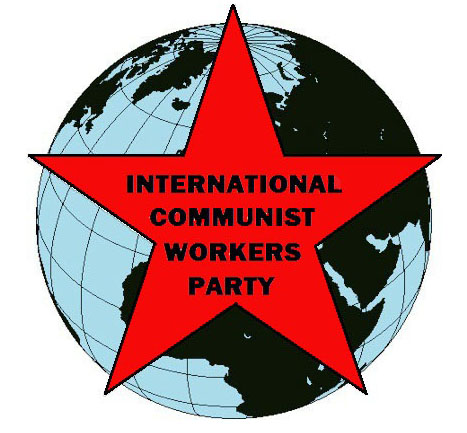
 |
FIGHT FOR COMMUNISM! |
International Communist Workers Party | |

“I hate Indians,” Winston Churchill, Britain’s World War II leader, would boast. And in 1942 he refused to divert food to halt the Bengal famine. “The starvation of anyhow underfed Bengalis is less serious than…of sturdy Greeks,” he argued. Five million Bengalis died as a result, a crime of fascist proportions. This, at the same time as two and a half million Indians were voluntarily fighting for the British against the Nazis. Talk about racist contempt!
Yet that was just the start. It’s an explosive story because in it the masses are the agents of change while the “Great Men” of India, Gandhi and Nehru, only react to events. It’s a story that our schools and popular media still hide from us.
World War Arms The Working Class
World War puts dangerous demands on the capitalist state. It forces the rulers to enlist, arm and train millions of working class youth for combat. Then the stress of war and battles teach the soldiers they are more alike (and need each other) than different—Black or white, Muslim, Hindu or Sikh. In this way, the material basis is laid for a youthful, armed and anti-racist working class to become agents of revolutionary change rather than victims of imperialist violence.
The Bengal Famine was the turning point. Between March 1942 and April 1946 there were mass uprisings, general strikes and 15 mutinies in the Indian Armed forces. The most significant one was the Bombay Mutiny of 1946.
Watered-down curry, racist abuse from British officers and the arrest of sailor B.C. Dutt (a Hindu) for writing anti-British slogans sparked the mutiny. At a mass meeting the sailors elected Leading Signalman M.S. Khan (a Muslim) and Petty Officer Telegraphist Madan Singh (a Sikh) to lead the strike. In one decisive moment they wiped out the sectarian division British Imperialism had been fostering in India ever since the Sepoy rebellion of 1857.
The Power Of The Armed Masses
“The first thing we did was free B.C. Dutt,” recalls Madan Singh. “Then we took possession of Bucher Island (where the entire ammunition for Bombay was stocked).” Next, they took the transmitters at Kirki, the channel of communication between the Indian and British governments.”
Then, they drew up demands. Immediate withdrawal of Indian troops from Egypt and Indonesia, independence for all Asian colonies, release of all political prisoners, better food and equal status with British officers. With its control of communications, the mutiny spread. Within days 78 ships, 20 shore establishments and 20,000 sailors had joined in. The ships replaced the British flag with the Muslim flag, the Hindu flag and the Red Flag.
Mass support came from Bombay’s working class. Within two days the Communist Party organized a general strike. 300,000 workers walked out. They set up barricades and had armed clashes with the police. But the Congress Party and Muslim League leaders (invited into the mutiny because the sailors had raised their flags) worked overtime to isolate the uprising from the rest of India and eventually the leadership was forced to surrender.
“Fight And Lose Until We Win”
It did so, however, with a call to continue the struggle. “Our uprising was an important historical event in the lives of our people. For the first time the blood of uniformed and non-uniformed workers flowed in one current for the same collective cause. The coming generations shall accomplish what we have not been able to achieve. Long live the working masses. Long live the revolution.”
The imperialists had won this battle, but they had lost India. Later that year, 1,700 soldiers in the British-led Indian Army mutinied. Then British airmen mutinied. They wanted to be sent home, not deployed to keep India in the Empire. The London government realized they had neither the troops nor the money to hold on to India.
This mutiny shows us the importance and power of mobilizing masses of soldiers and sailors in the bosses’ armed forces, and of winning youth to join the military, especially during imperialist war.
Power was rapidly handed over to the Congress Party and the Muslim League. The sun had finally begun to set on the British Empire.
But why didn’t a new sun rise on a brave new communist-led India? The flaw was in the general line of the old communist movement. It mistakenly fought for “national liberation,” which only changed the capitalist exploiters. We won’t ally with supposedly “lesser evil” bosses, like officers in the Indian Army or wave the Muslim or Hindu Flag. Workers of the world need only the Red Flag.
ICWP is mobilizing the masses, especially industrial workers, soldiers and sailors, directly for communist revolution so that, united together, we “the coming generation shall accomplish what (Dutt’s generation) was unable to achieve” - a new communist world where we collectively produce and fight only for our international working class.